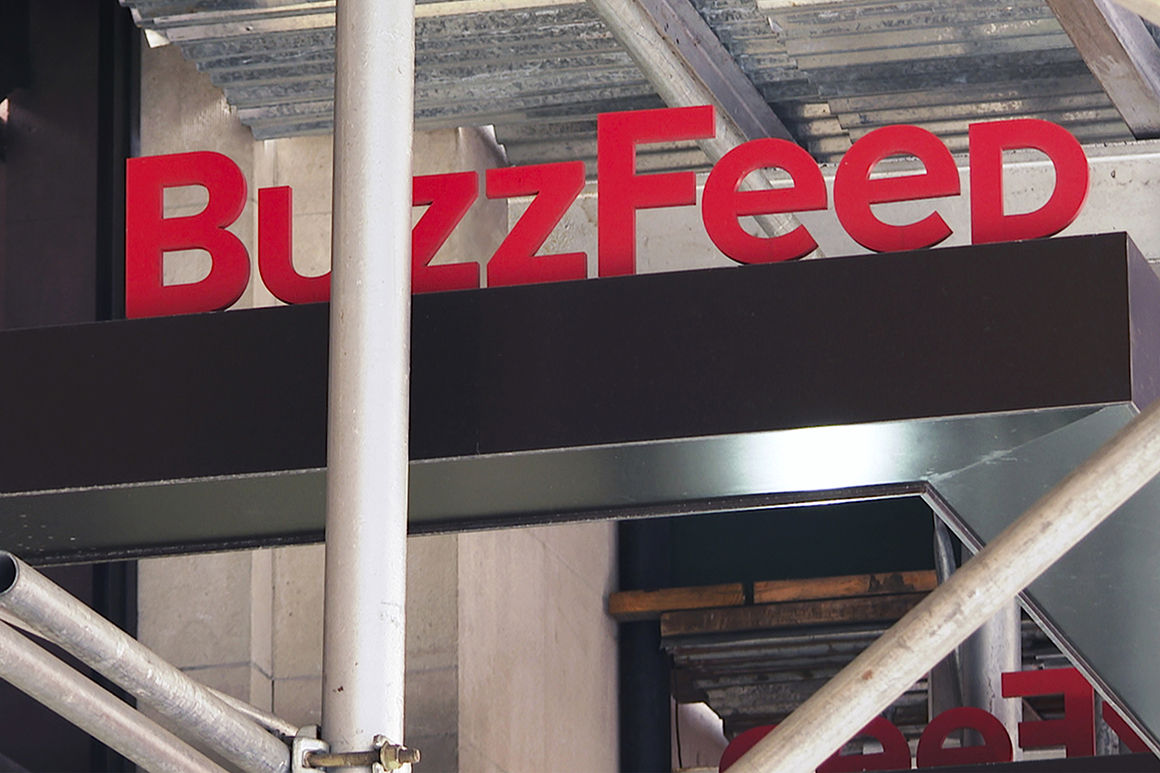uring the last years of my run at The New York Times, it seemed possible that digital news start-ups, like Vice and BuzzFeed, could eclipse old, legacy news organizations like us. The Gray Lady was looking every bit her age and she was stumbling in the age of social media. From its origins as punk magazine in Montreal, Vice, with a slate of YouTube channels, suddenly had a production deal with HBO, operated at least one cable channel, and was winning Peabodys for news. Its valuation at one point was touted as being close to $6 billion. BuzzFeed was building a first-class investigative reporting unit on the back of its usual fare—exploding watermelons and viral sensations like “What Colors Are This Dress?” Both companies had big and devoted younger audiences, manna for advertisers. Out of the blue, these digital newcomers to news were threatening to eat our lunch.
Reversals of fortune are nothing unusual in the news business. But in the last few weeks it’s been gobsmacking to see Vice facing bankruptcy and BuzzFeed shuttering its news division. The Times, meanwhile, hit its goal of 10 million paying subscribers a year ago and aims to have 15 million by the end of 2027—more than enough to sustain its large news-gathering operations. It wasn’t that long ago that The Atlantic (in 2009), predicted that it would be the Times that would soon go bankrupt.
What happened?
It turned out that advertising was a bad bet. With the change of an algorithm, Facebook and Google slashed Vice and BuzzFeed’s massive audiences and hoovered up the bulk of digital advertising. Without huge traffic numbers, advertisers turned away and would no longer shell out millions for the bespoke brand advertising that was the lifeblood of Vice and BuzzFeed. Their young, hip followers were not willing to pay for their periodic scoops. News gathering turned out to be far more expensive than Shane Smith and Jonah Peretti, cofounders of Vice and BuzzFeed respectively, bargained for. (Howell Raines, the former executive editor of The New York Times, often said that if the Times went away, no one could ever rebuild it.)
The depth and breadth of the Times news report remains singular in quality, and reader revenue is now the cornerstone of the company’s financial security. Vice and BuzzFeed never had that secure base and without it they wobbled. They had taken big money from investors: 21st Century Fox put $70 million into Vice, with James Murdoch later buying a minority stake; NBCUniversal pumped $400 million into BuzzFeed. It’s almost unbelievable that Disney once considered acquiring each of them. Bankruptcy may be the only option for Vice because no good bidders have emerged for a takeover. BuzzFeed’s stock, issued during a failed IPO, is virtually worthless.
But fickle economic winds do not give the full picture.
Despite being initially thrown off course during the digital transition, the Times had the confidence and will to stick to its core strength—the news—even during years when the company was saddled with heavy debt and shareholder rebellions were brewing. It never succumbed to Wall Street’s short-term demands or made crippling cuts to its newsroom. The Times remained stubbornly faithful to its news report and expanded globally. Its board remained faithful to the Sulzberger family that has owned the Times since 1896.
In hindsight, all this may look like a no-brainer, but during the roughest patches of the digital transition and the financial crisis, everyone on the inside had their doubts. I had a ringside seat as managing editor and executive editor of the Times. I led the merger of what had been separate and duplicative digital and print newsrooms, which the paper’s culture resisted. We were still running from behind in 2012 when I asked Arthur Gregg Sulzberger, then a talented reporter and editor, to form an Innovation Committee. The committee’s first mandate was to develop a suite of new products that would generate quick, new revenue. But after a few months, Sulzberger, now publisher of the Times and chairman of the New York Times Company, asked me to change the committee’s focus. “We need to grow from the core,” he told me, meaning our future would hinge on building from our core strength, the news report. We would secure the Times’ future by growing digital subscriptions and leveraging our strengths in areas like cooking (the Times owned thousands of fabulous recipes) and games (like its venerable crossword puzzle).
Neither Vice nor BuzzFeed could have executed this kind of strategy. Vice’s core was always sex, drugs, and rock and roll, and even as it branched into video, dispatching journalists to war zones and global hot spots, its most popular shows were series like F*ck, That’s Delicious, hosted by Action Bronson, the rapper and road-food gourmand. BuzzFeed’s core was its listicles, quizzes, and light celebrity news, popular but not likely to draw the paying customers needed for attracting and retaining great journalists. Building serious journalism muscles, meanwhile, was prohibitively expensive. So was retaining talent. The Times would eventually poach a number of BuzzFeed journalists, along with talent from upstarts like Vox.
The lesson in all this isn’t that legacy news organizations were destined to win (most didn’t) or that digital newcomers failed precisely because they were new. Some digital news organizations, like Politico, are successes and are profitable. Like the Times, Politico grew from a strong core. It covers politics and policy in a more granular way than anyone. Political junkies couldn’t live without it; companies with a vested interest in legislation would pay handsomely for its policy-focused Pro subscriptions. Paid conferences and other live events are logical and profitable extensions. Meanwhile, Talking Points Memo, created and run by Josh Marshall, has sustained itself since 2000 as a smart, original political site.
ProPublica, a nonprofit, has a solid core of investigative journalism that has sustained growth and won Pulitzers. There are a group of local nonprofits, like the Texas Tribune and Mississippi Today, that produce high-quality journalism, have an expanding base of donors and readers, and are beginning to fill the vacuum created by the closures of so many local newspapers. And Substack, a platform that hosts writers across the ideological spectrum who are creating subscription-based newsletters, has emerged as another potential destination for quality journalism online. And there are other interesting experiments in news rising out of the ashes.
No one should be dancing on the graves of Vice or BuzzFeed News. Competition makes everyone, including the Times, better. Journalism, a bedrock of democracy, thrives when different voices and informed audiences make themselves heard. With abysmal public trust numbers, everyone working in news is on shaky ground. Seeing that landscape shrink even further is distressing for journalists—and the public they serve.
by- https://www.vanityfair.com/news/2023/05/why-buzzfeed-and-vice-couldnt-make-news-work




COMMENTS